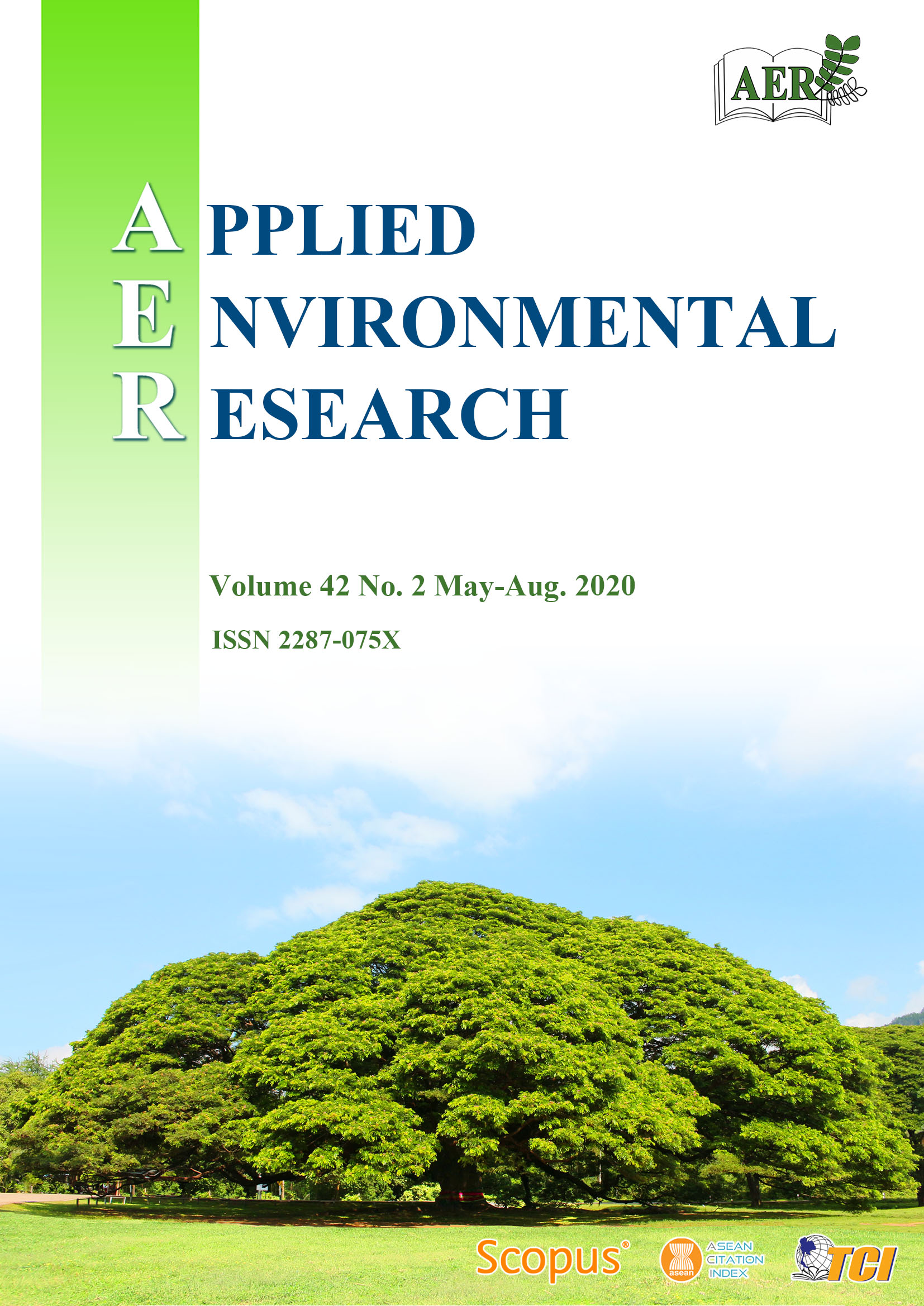Health Risk Assessment of Pesticide Residues in Vegetables from River Basin Area
Main Article Content
Abstract
Environmental contaminations with pesticides are considered as one of the major environmental pathways of human exposure leading to a potential threat to human health, especially if there is an accumulation in the trophic levels. This study purposed to investigate the level of pesticide residues and the potential health risk associated with vegetables, surface water, and sediment obtained from the river basin area. The concentrations of 87 pesticides from four main groups namely; organophosphate, organochlorine, pyrethroid, and persistent organic pollutants (POPs) were verified by triple quadrupole GC-MS/MS. The concentration of Parathion methyl, Methidathion, Bromophos methyl, Chlorfenvinphos, Triazophos, Azinphos ethyl, and D-trans-Phenothrin in the sediment samples ranged from 12.99-19.95 μg kg-1. The surface water sample mainly contains p, p'-DDT <0.012 μg L-1 followed by Endrin and Dieldrin <0.08 μg L-1, and Aldrin, Alpha-BHC, Heptachlor <0.004 μg L-1, respectively. The PTI was detected at 0.4 in the sum of surface water samples. The detectable pesticide residues were found in 95% of 20 vegetable samples. The positive of screening vegetables were most obviously contaminated with organophosphate (95%) followed by pyrethroid (40%), organochlorine (20%) and POPs (5%), respectively. The highest concentration of 0.04 mg kg-1 was recorded for Dicrotophos in Kitchen mint (Mentha cordifolia Opiz ex Fresen). Fenpropathrin recorded the lowest concentration of 3.2x10-3 mg kg-1 in corn (Zea mays L.). The highest PTI (31.20) was found in corn. The combined risk index of pesticide residues showed significant health risk to humans more than individual risk index. The health risk indices show that the detected pesticides considered a serious public health problem in the studied area, and there is a need to increment their monitoring to reduce their misuse.
Article Details

This work is licensed under a Creative Commons Attribution-NonCommercial 4.0 International License.
Published articles are under the copyright of the Applied Environmental Research effective when the article is accepted for publication thus granting Applied Environmental Research all rights for the work so that both parties may be protected from the consequences of unauthorized use. Partially or totally publication of an article elsewhere is possible only after the consent from the editors.

